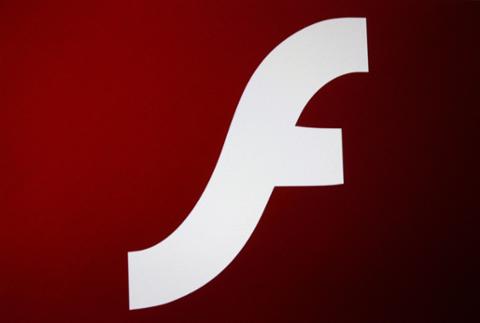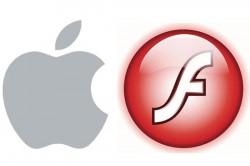 Flash aims to make "traditional" spinning drives a thing of the past.[/caption] IBM is pumping more money into its Flash technology projects, with the intent of speeding up Big Data analytics. That $1 billion investment will go into designing and developing new Flash products for servers, storage systems and middleware. “The economics and performance of Flash are at a point where the technology can have a revolutionary impact on enterprises, especially for transaction-intensive applications,” Ambuj Goyal, General Manager of Systems Storage, IBM Systems & Technology Group, wrote in a statement. Goyal added: “The confluence of Big Data, social, mobile and cloud technologies is creating an environment in the enterprise that demands faster, more efficient, access to business insights, and Flash can provide that access quickly.” Because Flash technology contains no moving parts, it’s generally viewed as more reliable and hardier than “traditional” spinning drives; and because of its lowered response times in gathering information from servers and storage systems, it’s an ideal platform for those working with massive volumes of data. That’s IBM’s story, at least, and the company is sticking to it. The Flash announcement is also a shot across the bow of Oracle, which markets integrated hardware-software solutions to the enterprise. In late March, Oracle whipped the curtain back from the SPARC T5 microprocessor, which it claimed was the world’s fastest such platform. “When Oracle bought Sun, the thought was that the SPARC processor was a real laggard; they believed that we could never catch up,” Oracle CEO Larry Ellison told media and analysts assembled at a press conference. “We did better than catch up; we caught up and passed the competition.” Ellison’s “competition” was certainly IBM, which promptly took aim at Oracle’s benchmarks. That clearly wasn’t going to be the end of it; and while IBM’s investment was almost certainly in the works before Oracle’s microprocessor announcement, it’s clear that both companies are thinking very hard about hardware speed and how they can best serve clients with tons of data to process. While Oracle derives the bulk of its revenues from selling integrated hardware-and-software stacks to large enterprises, the company has been gravitating more toward the cloud in recent months, offering customers a variety of SaaS (Software-as-a-Service) solutions. While analysts and pundits have positioned cloud-based firms such as Salesforce as Oracle’s biggest competition, IBM and other firms that build hardware also present a clear threat to Oracle’s core business. Image: Olaru Radian-Alexandru/Shutterstock.com
Flash aims to make "traditional" spinning drives a thing of the past.[/caption] IBM is pumping more money into its Flash technology projects, with the intent of speeding up Big Data analytics. That $1 billion investment will go into designing and developing new Flash products for servers, storage systems and middleware. “The economics and performance of Flash are at a point where the technology can have a revolutionary impact on enterprises, especially for transaction-intensive applications,” Ambuj Goyal, General Manager of Systems Storage, IBM Systems & Technology Group, wrote in a statement. Goyal added: “The confluence of Big Data, social, mobile and cloud technologies is creating an environment in the enterprise that demands faster, more efficient, access to business insights, and Flash can provide that access quickly.” Because Flash technology contains no moving parts, it’s generally viewed as more reliable and hardier than “traditional” spinning drives; and because of its lowered response times in gathering information from servers and storage systems, it’s an ideal platform for those working with massive volumes of data. That’s IBM’s story, at least, and the company is sticking to it. The Flash announcement is also a shot across the bow of Oracle, which markets integrated hardware-software solutions to the enterprise. In late March, Oracle whipped the curtain back from the SPARC T5 microprocessor, which it claimed was the world’s fastest such platform. “When Oracle bought Sun, the thought was that the SPARC processor was a real laggard; they believed that we could never catch up,” Oracle CEO Larry Ellison told media and analysts assembled at a press conference. “We did better than catch up; we caught up and passed the competition.” Ellison’s “competition” was certainly IBM, which promptly took aim at Oracle’s benchmarks. That clearly wasn’t going to be the end of it; and while IBM’s investment was almost certainly in the works before Oracle’s microprocessor announcement, it’s clear that both companies are thinking very hard about hardware speed and how they can best serve clients with tons of data to process. While Oracle derives the bulk of its revenues from selling integrated hardware-and-software stacks to large enterprises, the company has been gravitating more toward the cloud in recent months, offering customers a variety of SaaS (Software-as-a-Service) solutions. While analysts and pundits have positioned cloud-based firms such as Salesforce as Oracle’s biggest competition, IBM and other firms that build hardware also present a clear threat to Oracle’s core business. Image: Olaru Radian-Alexandru/Shutterstock.com IBM’s Big Flash Cash: Shot Across Oracle’s Bow
[caption id="attachment_9119" align="aligncenter" width="500"]  Flash aims to make "traditional" spinning drives a thing of the past.[/caption] IBM is pumping more money into its Flash technology projects, with the intent of speeding up Big Data analytics. That $1 billion investment will go into designing and developing new Flash products for servers, storage systems and middleware. “The economics and performance of Flash are at a point where the technology can have a revolutionary impact on enterprises, especially for transaction-intensive applications,” Ambuj Goyal, General Manager of Systems Storage, IBM Systems & Technology Group, wrote in a statement. Goyal added: “The confluence of Big Data, social, mobile and cloud technologies is creating an environment in the enterprise that demands faster, more efficient, access to business insights, and Flash can provide that access quickly.” Because Flash technology contains no moving parts, it’s generally viewed as more reliable and hardier than “traditional” spinning drives; and because of its lowered response times in gathering information from servers and storage systems, it’s an ideal platform for those working with massive volumes of data. That’s IBM’s story, at least, and the company is sticking to it. The Flash announcement is also a shot across the bow of Oracle, which markets integrated hardware-software solutions to the enterprise. In late March, Oracle whipped the curtain back from the SPARC T5 microprocessor, which it claimed was the world’s fastest such platform. “When Oracle bought Sun, the thought was that the SPARC processor was a real laggard; they believed that we could never catch up,” Oracle CEO Larry Ellison told media and analysts assembled at a press conference. “We did better than catch up; we caught up and passed the competition.” Ellison’s “competition” was certainly IBM, which promptly took aim at Oracle’s benchmarks. That clearly wasn’t going to be the end of it; and while IBM’s investment was almost certainly in the works before Oracle’s microprocessor announcement, it’s clear that both companies are thinking very hard about hardware speed and how they can best serve clients with tons of data to process. While Oracle derives the bulk of its revenues from selling integrated hardware-and-software stacks to large enterprises, the company has been gravitating more toward the cloud in recent months, offering customers a variety of SaaS (Software-as-a-Service) solutions. While analysts and pundits have positioned cloud-based firms such as Salesforce as Oracle’s biggest competition, IBM and other firms that build hardware also present a clear threat to Oracle’s core business. Image: Olaru Radian-Alexandru/Shutterstock.com
Flash aims to make "traditional" spinning drives a thing of the past.[/caption] IBM is pumping more money into its Flash technology projects, with the intent of speeding up Big Data analytics. That $1 billion investment will go into designing and developing new Flash products for servers, storage systems and middleware. “The economics and performance of Flash are at a point where the technology can have a revolutionary impact on enterprises, especially for transaction-intensive applications,” Ambuj Goyal, General Manager of Systems Storage, IBM Systems & Technology Group, wrote in a statement. Goyal added: “The confluence of Big Data, social, mobile and cloud technologies is creating an environment in the enterprise that demands faster, more efficient, access to business insights, and Flash can provide that access quickly.” Because Flash technology contains no moving parts, it’s generally viewed as more reliable and hardier than “traditional” spinning drives; and because of its lowered response times in gathering information from servers and storage systems, it’s an ideal platform for those working with massive volumes of data. That’s IBM’s story, at least, and the company is sticking to it. The Flash announcement is also a shot across the bow of Oracle, which markets integrated hardware-software solutions to the enterprise. In late March, Oracle whipped the curtain back from the SPARC T5 microprocessor, which it claimed was the world’s fastest such platform. “When Oracle bought Sun, the thought was that the SPARC processor was a real laggard; they believed that we could never catch up,” Oracle CEO Larry Ellison told media and analysts assembled at a press conference. “We did better than catch up; we caught up and passed the competition.” Ellison’s “competition” was certainly IBM, which promptly took aim at Oracle’s benchmarks. That clearly wasn’t going to be the end of it; and while IBM’s investment was almost certainly in the works before Oracle’s microprocessor announcement, it’s clear that both companies are thinking very hard about hardware speed and how they can best serve clients with tons of data to process. While Oracle derives the bulk of its revenues from selling integrated hardware-and-software stacks to large enterprises, the company has been gravitating more toward the cloud in recent months, offering customers a variety of SaaS (Software-as-a-Service) solutions. While analysts and pundits have positioned cloud-based firms such as Salesforce as Oracle’s biggest competition, IBM and other firms that build hardware also present a clear threat to Oracle’s core business. Image: Olaru Radian-Alexandru/Shutterstock.com
 Flash aims to make "traditional" spinning drives a thing of the past.[/caption] IBM is pumping more money into its Flash technology projects, with the intent of speeding up Big Data analytics. That $1 billion investment will go into designing and developing new Flash products for servers, storage systems and middleware. “The economics and performance of Flash are at a point where the technology can have a revolutionary impact on enterprises, especially for transaction-intensive applications,” Ambuj Goyal, General Manager of Systems Storage, IBM Systems & Technology Group, wrote in a statement. Goyal added: “The confluence of Big Data, social, mobile and cloud technologies is creating an environment in the enterprise that demands faster, more efficient, access to business insights, and Flash can provide that access quickly.” Because Flash technology contains no moving parts, it’s generally viewed as more reliable and hardier than “traditional” spinning drives; and because of its lowered response times in gathering information from servers and storage systems, it’s an ideal platform for those working with massive volumes of data. That’s IBM’s story, at least, and the company is sticking to it. The Flash announcement is also a shot across the bow of Oracle, which markets integrated hardware-software solutions to the enterprise. In late March, Oracle whipped the curtain back from the SPARC T5 microprocessor, which it claimed was the world’s fastest such platform. “When Oracle bought Sun, the thought was that the SPARC processor was a real laggard; they believed that we could never catch up,” Oracle CEO Larry Ellison told media and analysts assembled at a press conference. “We did better than catch up; we caught up and passed the competition.” Ellison’s “competition” was certainly IBM, which promptly took aim at Oracle’s benchmarks. That clearly wasn’t going to be the end of it; and while IBM’s investment was almost certainly in the works before Oracle’s microprocessor announcement, it’s clear that both companies are thinking very hard about hardware speed and how they can best serve clients with tons of data to process. While Oracle derives the bulk of its revenues from selling integrated hardware-and-software stacks to large enterprises, the company has been gravitating more toward the cloud in recent months, offering customers a variety of SaaS (Software-as-a-Service) solutions. While analysts and pundits have positioned cloud-based firms such as Salesforce as Oracle’s biggest competition, IBM and other firms that build hardware also present a clear threat to Oracle’s core business. Image: Olaru Radian-Alexandru/Shutterstock.com
Flash aims to make "traditional" spinning drives a thing of the past.[/caption] IBM is pumping more money into its Flash technology projects, with the intent of speeding up Big Data analytics. That $1 billion investment will go into designing and developing new Flash products for servers, storage systems and middleware. “The economics and performance of Flash are at a point where the technology can have a revolutionary impact on enterprises, especially for transaction-intensive applications,” Ambuj Goyal, General Manager of Systems Storage, IBM Systems & Technology Group, wrote in a statement. Goyal added: “The confluence of Big Data, social, mobile and cloud technologies is creating an environment in the enterprise that demands faster, more efficient, access to business insights, and Flash can provide that access quickly.” Because Flash technology contains no moving parts, it’s generally viewed as more reliable and hardier than “traditional” spinning drives; and because of its lowered response times in gathering information from servers and storage systems, it’s an ideal platform for those working with massive volumes of data. That’s IBM’s story, at least, and the company is sticking to it. The Flash announcement is also a shot across the bow of Oracle, which markets integrated hardware-software solutions to the enterprise. In late March, Oracle whipped the curtain back from the SPARC T5 microprocessor, which it claimed was the world’s fastest such platform. “When Oracle bought Sun, the thought was that the SPARC processor was a real laggard; they believed that we could never catch up,” Oracle CEO Larry Ellison told media and analysts assembled at a press conference. “We did better than catch up; we caught up and passed the competition.” Ellison’s “competition” was certainly IBM, which promptly took aim at Oracle’s benchmarks. That clearly wasn’t going to be the end of it; and while IBM’s investment was almost certainly in the works before Oracle’s microprocessor announcement, it’s clear that both companies are thinking very hard about hardware speed and how they can best serve clients with tons of data to process. While Oracle derives the bulk of its revenues from selling integrated hardware-and-software stacks to large enterprises, the company has been gravitating more toward the cloud in recent months, offering customers a variety of SaaS (Software-as-a-Service) solutions. While analysts and pundits have positioned cloud-based firms such as Salesforce as Oracle’s biggest competition, IBM and other firms that build hardware also present a clear threat to Oracle’s core business. Image: Olaru Radian-Alexandru/Shutterstock.com 

